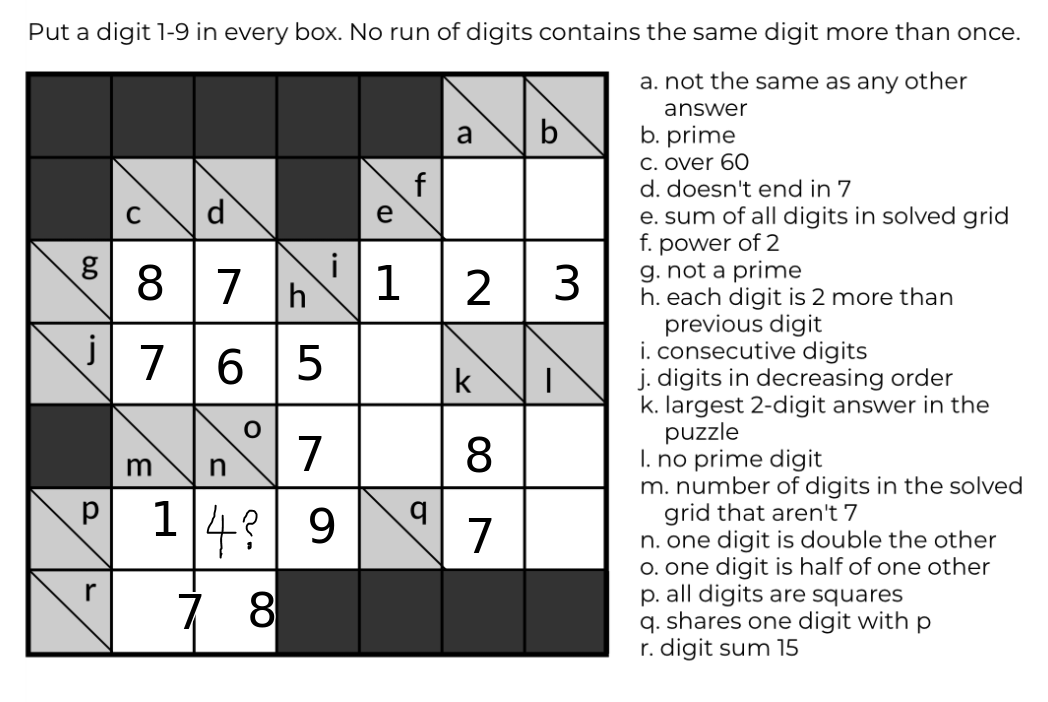📝📝
-
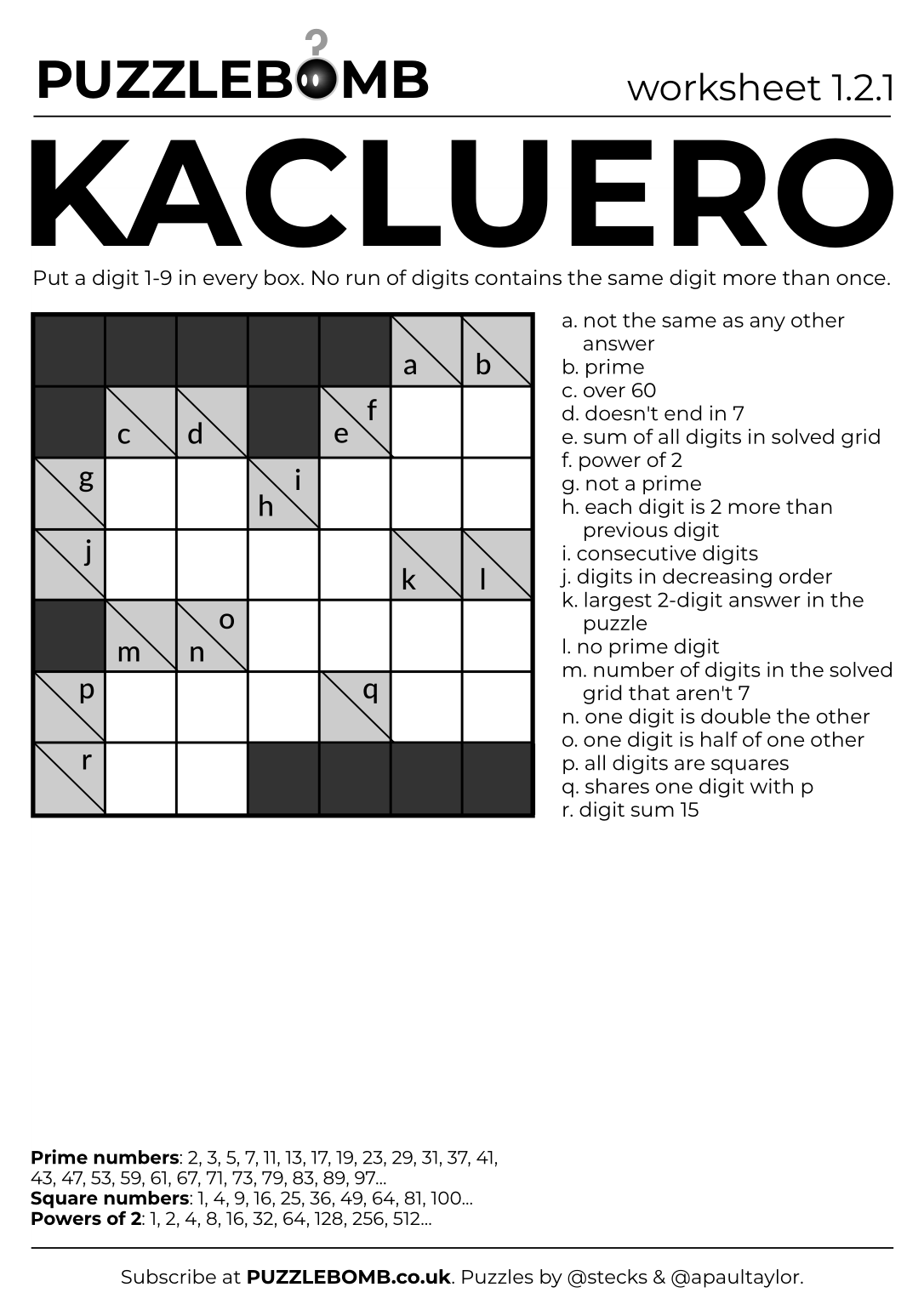
-
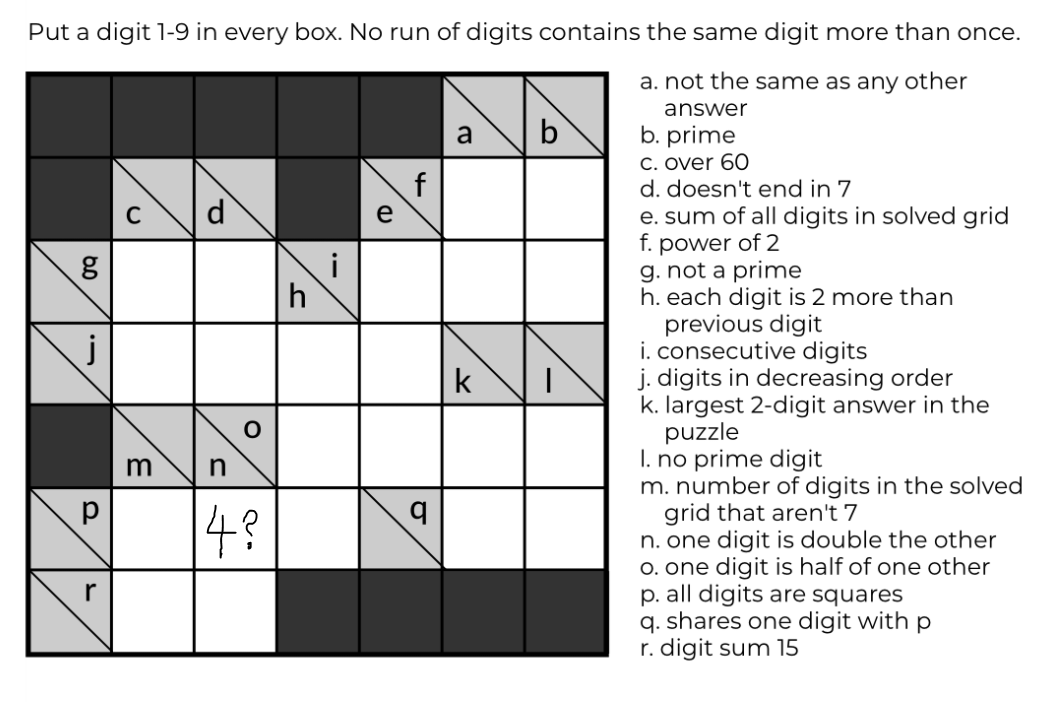
-
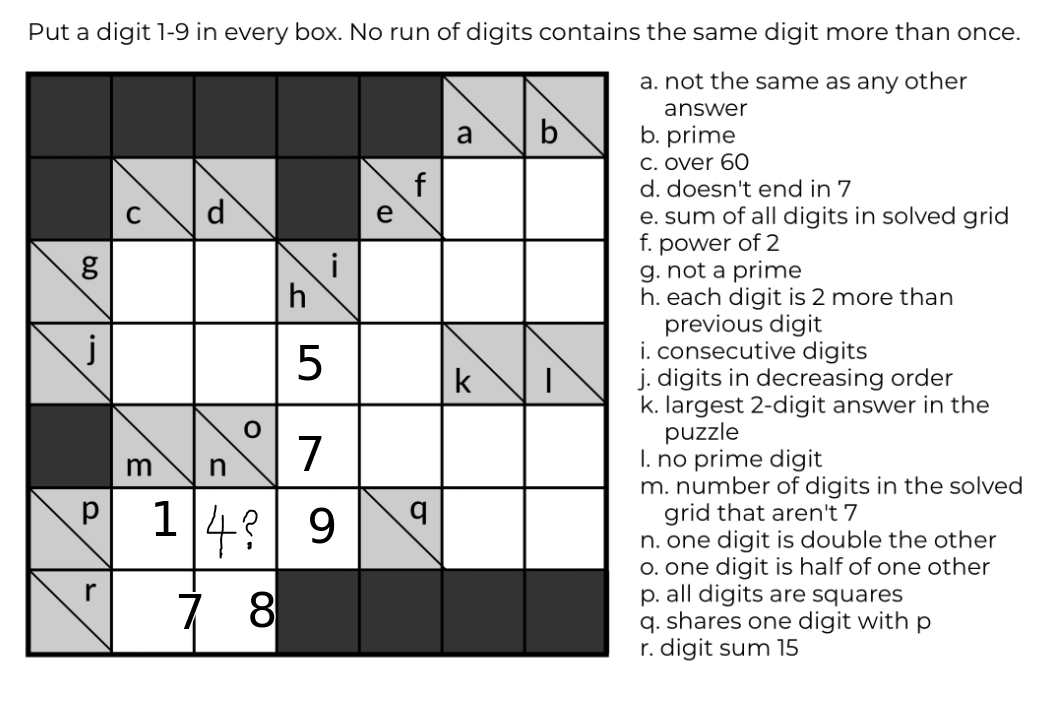
-
@Atazhaia
iis123
Given that there are 22 digits in the puzzle, 22 × 9 = 198, soeis less than 200 and thereforeistarts with a1.
-
@dkf f is 32 or 64.
e is between 123 and 149
d\j is either 6 or 8
There are a total of five 7s in the puzzle.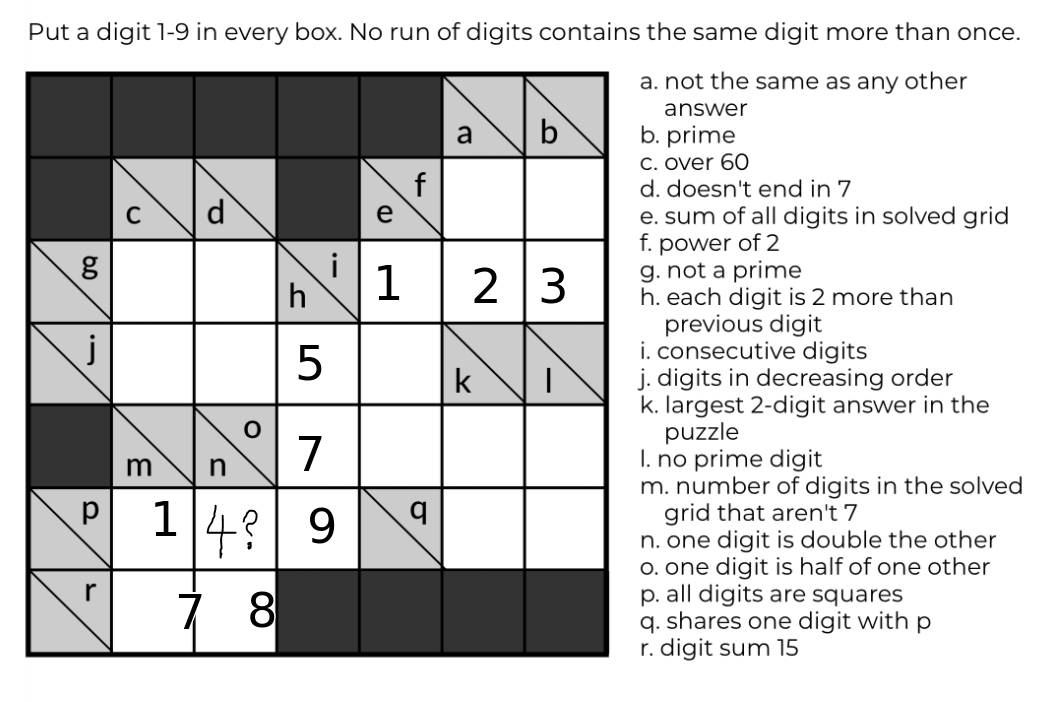
-
There are a total of five 7s in the puzzle.
Thus, c, d, and q all contain a 7 (as a does not).
So d must start with a 7, as it can't end in one.
Sogmust be87(only non-prime ending in 7 that has its first digit at least 6)
Andcmust also be87
Anddmust be76(because 6 is between 7 and 5)
-
-
@Atazhaia I think
either you or @dkf isyou are wrong, because87in k doesn't work for me.My solution
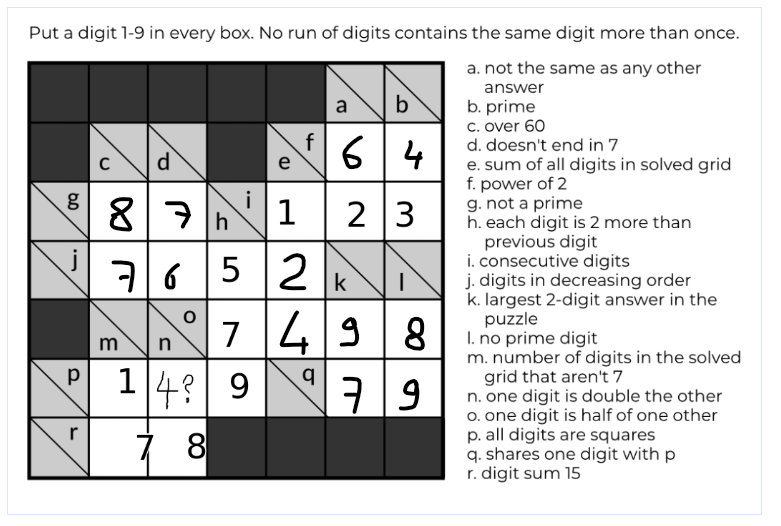
edit:
 what is the correct syntax for a picture inside a
what is the correct syntax for a picture inside a <details>tag again? I tried adding newlines but that only makes it worse...edit edit: nevermind, I didn't properly close my
<summary>
-
@Atazhaia Oh wait... I interpreted
kas "the solution to this clue is larger than any other 2-digits number in the puzzle" but now I can see that you probably read it as "the solution to this clue is equal to the largest of all 2-digits number in the puzzle."Nonetheless, my interpretation yields a working solution (I think?) so I have to assume that either my interpretation is the correct one, or that there are at least 2 solutions?
-
"the solution to this clue is larger than any other 2-digits number in the puzzle"
Take all two digit answers in the puzzle.
kis the largest one of those. I'm not sure if there are other instances of that same value. k ≥ 87, i.e., k ∈ {87, 97} (because it must contain a 7 and l contains no prime digits)
-
@dkf Yes, I guess that's one way to read it. I understood "largest" as "strictly larger than any other", but "larger or equal" works as well. Which is a third way to interpret the clue, but doesn't change my solution...
(edit: @Atazhaia conclusion of "it must be 87" means he didn't see the clue as "k must be larger or equal to all other numbers" but as "it must be the same as the largest number", which I think is wrong)
I also had a moment of doubt about i, I wasn't sure if "consecutive" meant necessarily in increasing order (for me 321 are also in consecutive order). But in that case it's less of an issue since e (sum of all digits) excludes anything but 1 to start with, so it can only be 123.
-
But again, since I managed to find a solution (provided it's correct?), this means my interpretation is correct.
Yes. I'm just trying to follow the reasoning.

-
@dkf note that I edited that bit out because it's technically incorrect... or rather, it's maybe over-restrictive by excluding 87 (turns out that 87 isn't my solution so it fits my interpretation, but maybe I should not have discarded it so quickly!).
Though looking back at my scribblings, it seems I actually kept the 8 around until very late... oh wait, that was because I wasn't sure whether the last digit was a 7 or a 9 (so I was actually considering 89 or 97 as solutions).
(edit: note that the 7 at the end of k is not a given... you know there is one 7 in this line (clue q) but also that the other digit is 1/4/9 ("shares one digit with p"), and you don't know (yet
 ) which is which...)
) which is which...)Anyway, in case you need a hint, for me the most important clue to work out the last bits was the "sum of all digits."
-
After the minesweeper challenge, I keep looking at these in terms of "how can I solve this algorithmically;" and I'm seeing that basically the same algorithm applies to a broad group of grid-based games (Sudoku, Minesweeper, Picross, Crosswords...). Basically, visit every square and enumerate all the possible values, then revisit them and eliminate possibilities based on information revealed in the previous pass.
And, in the even more general sense, even more games fall into the "tree search" pattern; from there, it's an exercise in optimization to avoid exhaustively searching a vast tree.
-
note that the 7 at the end of k is not a given...
But we know there's a 7 (which is a prime digit) in
qbut not inl. It turns out that's easily decidable; I just missed seeing it earlier.
-
Basically, visit every square and enumerate all the possible values, then revisit them and eliminate possibilities based on information revealed in the previous pass.
The main problem with algorithmic handling of this is encoding the clues as actual algorithmic constraints.
-
Basically, visit every square and enumerate all the possible values, then revisit them and eliminate possibilities based on information revealed in the previous pass.
The main problem with algorithmic handling of this is encoding the clues as actual algorithmic constraints.
 An algorithm isn't necessarily a program. It's just a series of instructions that solves a problem in a finite number of steps. Those instructions can be carried out by a human bean; in which case, you don't need to encode anything.
An algorithm isn't necessarily a program. It's just a series of instructions that solves a problem in a finite number of steps. Those instructions can be carried out by a human bean; in which case, you don't need to encode anything.
Filed under: Like Paula.
-
-
note that the 7 at the end of k is not a given...
But we know there's a 7 (which is a prime digit) in
qbut not inl. It turns out that's easily decidable; I just missed seeing it earlier. that's so obvious now that you say it, and yet for ages I kept the indecision on where that 7 was in the two 'q' cases...
that's so obvious now that you say it, and yet for ages I kept the indecision on where that 7 was in the two 'q' cases...
